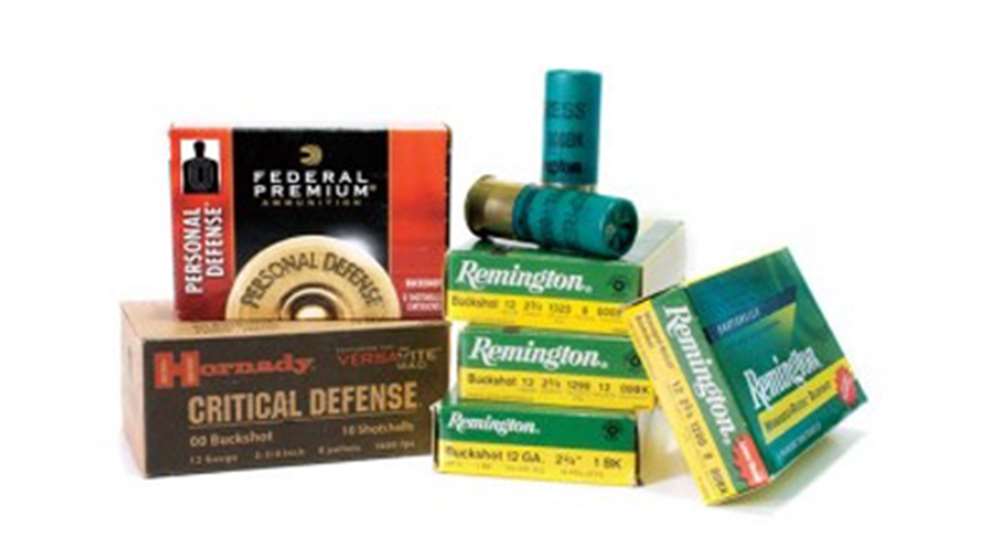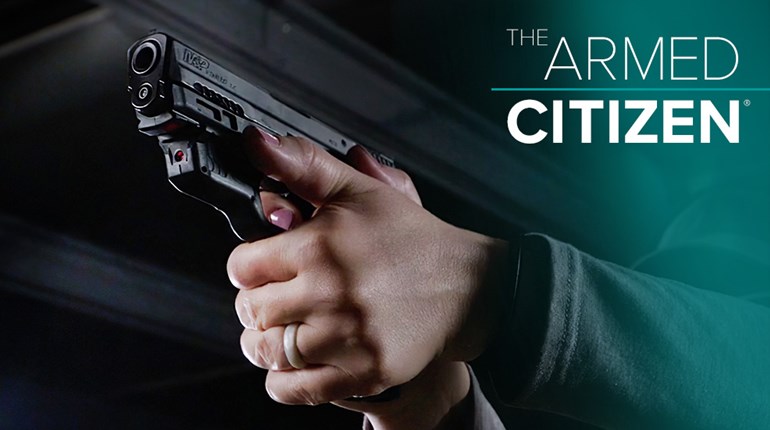
Buckshot is the primary load carried by law enforcement in shotguns and what you'll find stuffed in many scatterguns kept for home defense. Yet, a lot of shooters don't understand exactly what buckshot is or the differences between the various buckshot loads available.
Back in the day, when pistols fired lead round balls and most rifles fired pistol cartridges, a shotgun loaded with buckshot was immensely more devastating because it could drive eight or 10 similar-size lead balls into a villain with one shot. A century ago, looking down the barrel of a shotgun was about as fearsome a thing as you could face. Buckshot was bad medicine.
As bullet development progressed, defensive handgun cartridges became more lethal because the bullets not only expanded, they often fragmented. This created devilishly destructive wound cavities—not just holes like the lead bullets of the past. But, the shotgun has remained popular as a defensive option. The fame it gained on stagecoaches is where the term "riding shotgun" originated.
Buckshot-loaded shotguns are short-range firearms. Many still believe they are the most feared guns and put a lot of stock in what I consider an urban legend. This improbable proverb suggests if you pump the action of a Remington Model 870, bad guys will melt with fear. Some consider this a certainty. When my police department switched to Beretta shotguns, the chief believed it a bad idea because his officers could not make that "racking" sound anymore. Bad guys do not go to a bad-sounds-that-make-you-run school. If you need to go to a gun, you better be prepared to use it. Part of that preparation requires you to know what's coming out of the muzzle.
Buckshot comes in various sizes. Nominal pellet diameter ranges from .24 caliber for No. 4 buck to .38 caliber for four-ought buck. The most popular buckshot is 00 buck, which has a nominal pellet diameter of .33 caliber. The number of pellets per shell is governed by their size and their weight. Generally, shotshell ammunition has a payload of between 3⁄4 and 1 1⁄2 ounces. It takes about eight 00-buck pellets to make up a 3⁄4-ounce load. The more the payload weighs, the more recoil you'll experience. Recoil can also be increase with velocity. Most buckshot loads vary in velocity between 1,100 and 1,600 fps.
Recoil has to be considered for a defensive gun. Remington's Magnum 00-buck load has 12 pellets—about 1 1⁄8 ounces of shot—launched at almost 1,300 fps. This load is not pleasant to shoot. It's capable of dislodging fillings, changing your mind and blurring vision during the process, making practice as pleasant as visiting your mother-in-law and fast follow-up shots as difficult as a return visit. On the other hand, Remington offers an eight-pellet Managed-Recoil, 00-buck load at 1,200 fps with recoil half that of the Magnum load.
As for terminal performance, the more shot you have in a shell, the more holes you make in the bad guy. However, to get more shot inside a shell, the shot needs to be smaller. No. 4 buck will penetrate about half as deep—7 to 9 inches—as 00 buck. But a 3⁄4-ounce load of No. 4 buck is filled with 21 pellets, where a 3⁄4-ounce 00-buck load contains only eight pellets.
Since there's no perfect answer when it comes to terminal performance, you need to consider that the deep-penetrating 00-buck load is capable of shooting through walls in your home and retaining enough energy to cause a lethal wound. Therefore, it might not be the best choice for home defense. Some suggest, and I agree, that more common game loads or smaller buckshot can be better in a home-defense situations. Granted, smaller shot limits penetration, but inside 30 feet—a reasonable in-home engagement distance—any shotshell load is nasty, but when used at contact distance they're almost immoral.
Aside from shot size, recoil and shot quantity, understanding the range limitations of buckshot is critical to employing it effectively. With the help of a big guy with a thick shoulder, I conducted a test using six, 12-gauge buckshot loads to see how patterns spread from 5 to 25 yards. Using a cylinder-bore shotgun, we discovered when shooting beyond 20 yards at least one pellet will likely miss a human-size target. Beyond 30 yards, you'll struggle to keep half the pellets on a silhouette. As a conservative rule of thumb, you can expect buckshot patterns to spread 1 inch per yard. In other words, a buckshot pattern at 15 yards should be about 15 inches.
As with everything in life, there was an exception. Federal's Personal Defense, Copper-Plated, nine-pellet 00-buck load with the FlightControl Wad consistently delivered tight patterns half as large as the other loads tested. Is this a good thing? It could be if your aim is true; a tight cluster of pellets in the vitals will likely be a fight-stopper. However, it could also result in missing altogether.
To me, the standout tested load was the Remington Managed-Recoil, 8-pellet 00-buck load. It was unbelievably pleasant to shoot and patterns were just slightly smaller than standard buckshot loads.
In an effort to shrink patterns, a full choke was tried, but didn't fare well. Patterns were the same or larger than those with the cylinder-bore choke. Wide flyers were a given with all loads.
Ideally, test several buckshot loads in your shotgun to find one that delivers the pattern and number of holes in the target you feel is best for your needs. Buckshot can be a viable self-defense tool, but to paraphrase Harry Callahan—Clint Eastwood's character in the 1973 film "Magnum Force"—a man's got to know [his buckshot and] his limitations.





































